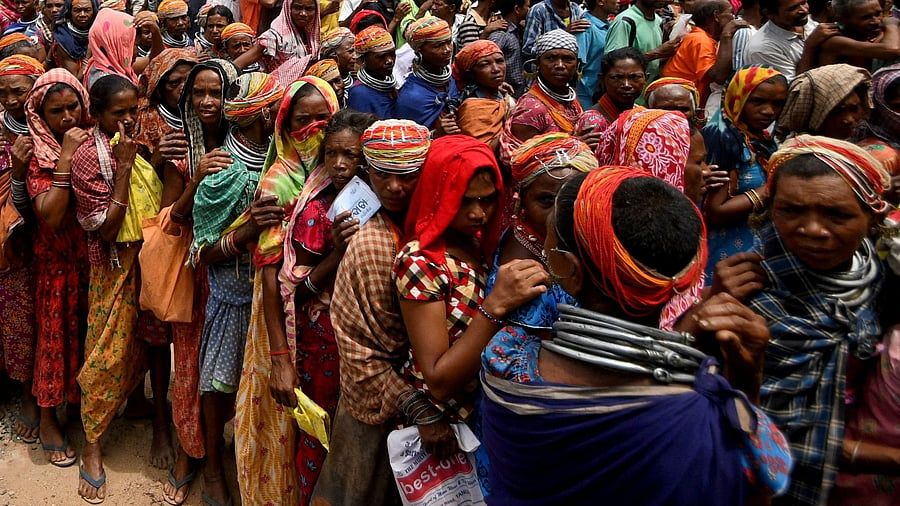
Tribal community in the eastern state of Odisha.
Reuters
Hyderabad: A large-scale genetic study by scientists at the CCMB in Hyderabad and the Birbal Sahni Institute of Palaeosciences in Lucknow suggested that industrialisation and cultural exchange caused Austroasiatic and Indo-European languages to mix among some East Indian tribal populations.
About 5 per cent of Indians speak Austroasiatic languages, largely among the ancient tribal populations of Odisha, Chattisgarh, and Jharkhand. Overall, the Austroasiatic speakers have retained their languages firmly for the last 4000 years. However, recently, some of these populations have started adopting Indo-European languages.
A recent study led by Dr. Kumarasamy Thangaraj at the CSIR Centre for Cellular and Molecular Biology (CCMB), Hyderabad, and Dr. Niraj Rai at the DST-Birbal Sahni Institute of Palaeosciences, Lucknow, shed light on understanding these changes in the ancient tribes of East India. Cell Press has published the findings in the international journal Heliyon.
This is the first high-throughput genetic study of the East Indian tribal populations. The researchers studied four major tribal populations—Bathudi, Bhumij, Ho, and Mahali—from Odisha. They examined the genetic affinities of these populations and a few Indo-European speakers from nearby areas.
Their findings suggest that the two groups do not mix genetically. The researchers suggested that the linguistic mixing between the Austroasiatic and Indo-European speakers happened likely due to the industrialization movement of Indo-European speakers, which may be from neighbouring states, and modernization, i.e., cultural exchange, which may be due to marriage, trade, or education that brought them into close cultural contact with the Austroasiatic speakers, and some of them have adapted Indo-European as a primary language.
The study did not find any Indo-European-speaking population that has adopted the Austroasiatic language. “Using genetic and linguistic data, we established for the first time that the language of Austroasiatic-speaking tribal groups is altered by the recent demographic changes. These linguistic shifts largely have sociocultural effects and present a threat to the Austroasiatic languages if this trend continues, given that only a small number of people speak these languages," said Dr. Thangaraj.
“This study is crucial and also an important add-on to the existing genetic database of Austroasiatic speakers. Considering the fact that India is one of the most diverse assemblages of people in the world, this research work is significant in demonstrating the origin of Austroasiatic speakers and demographic changes that happened in the deep past and those ongoing,” explained Dr Vinay Kumar Nandicoori, Director, CCMB. The other institutes and agencies involved in this study are the Academy of Scientific and Innovative Research (AcSIR), Ghaziabad, Shreyanshi Health Care Private Limited, Raipur, Chattisgarh, and Panjab University, Chandigarh.